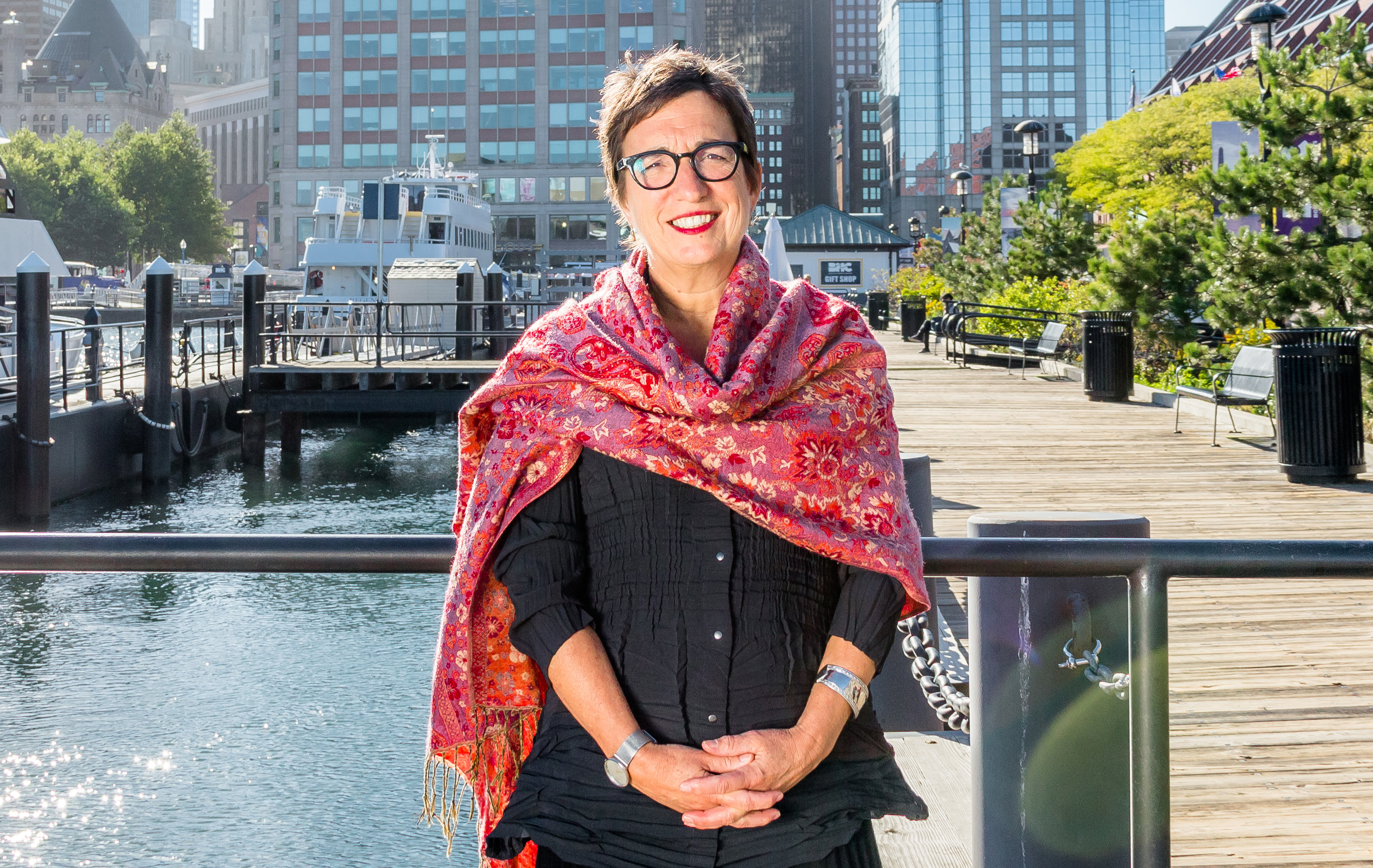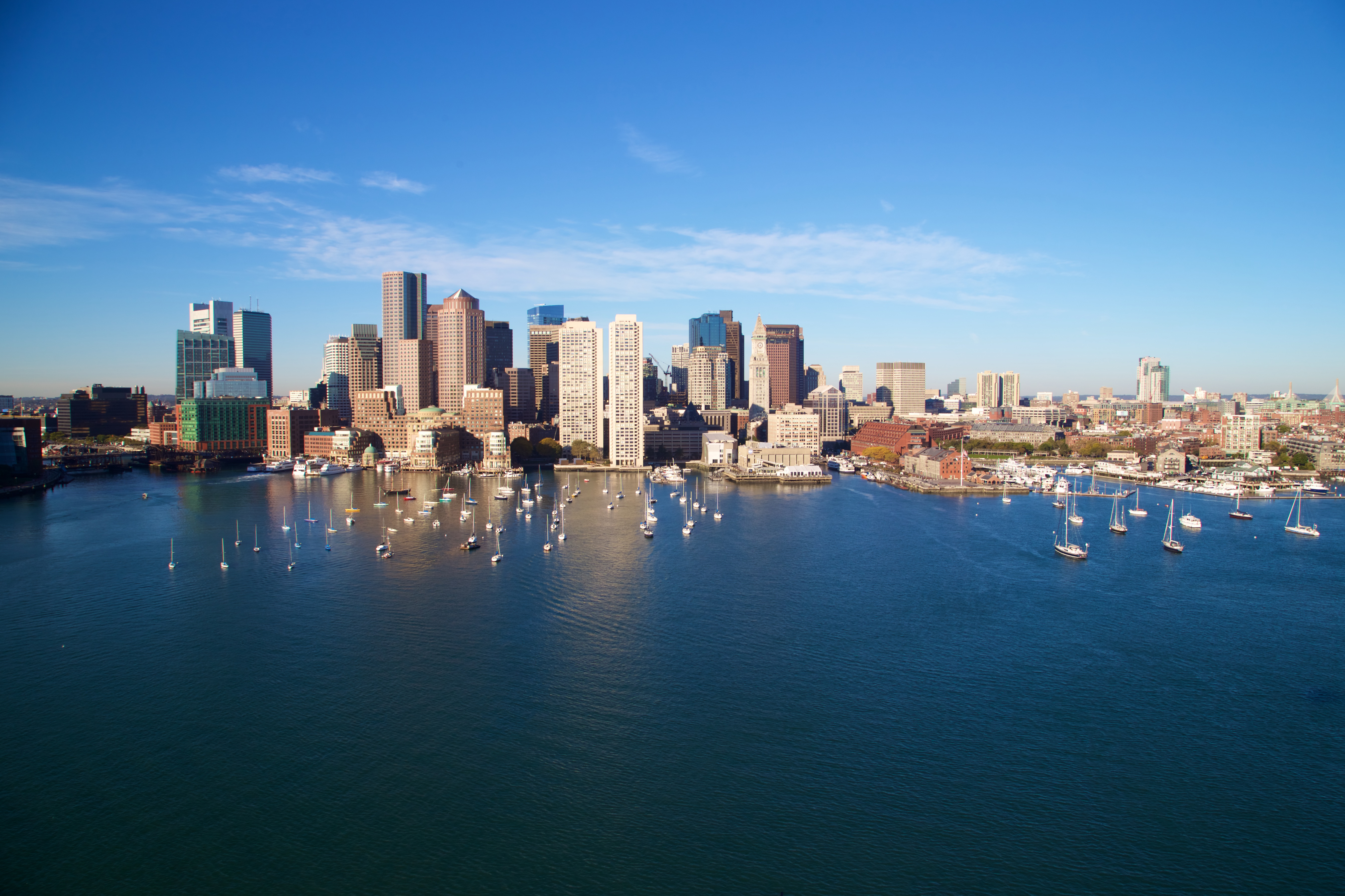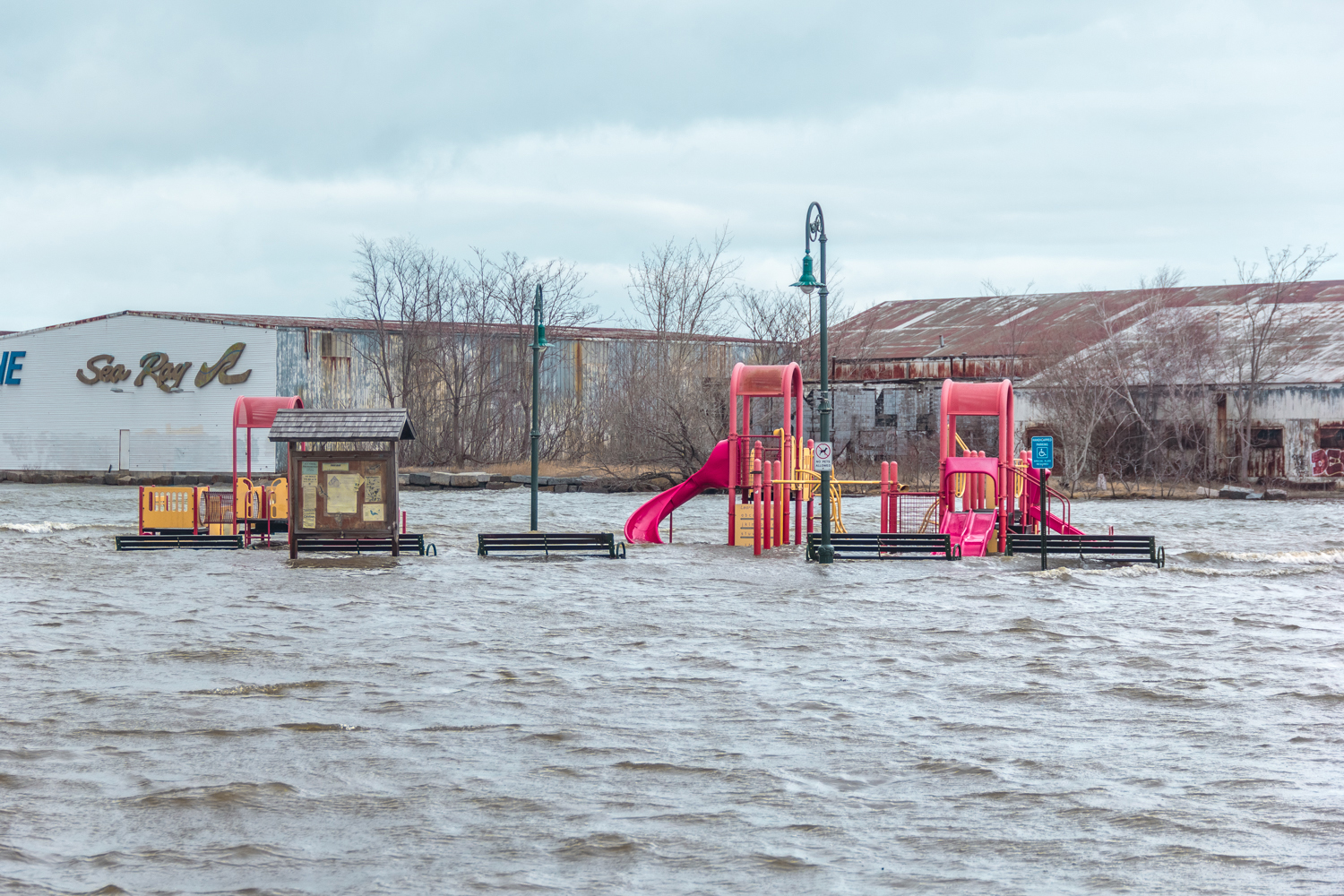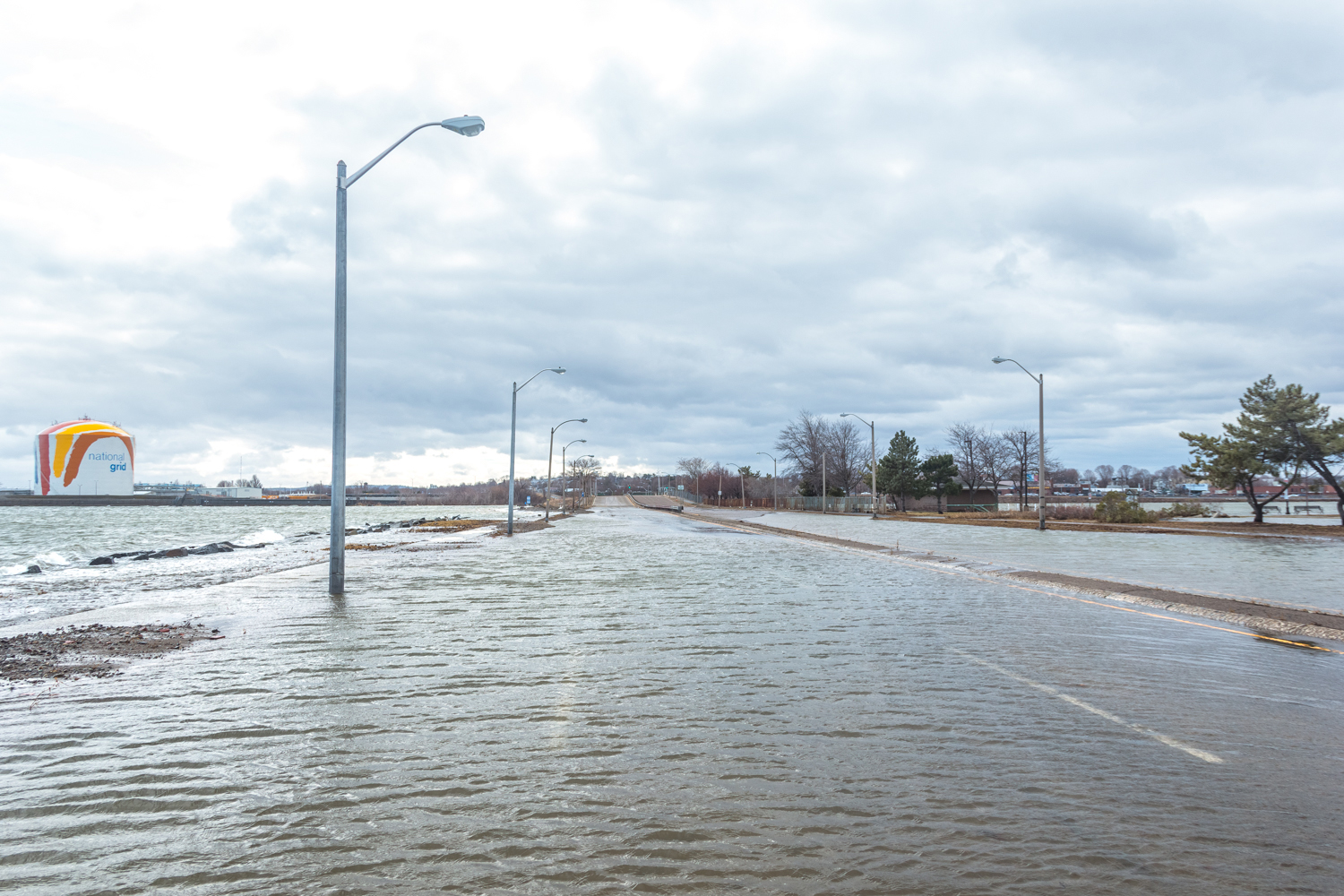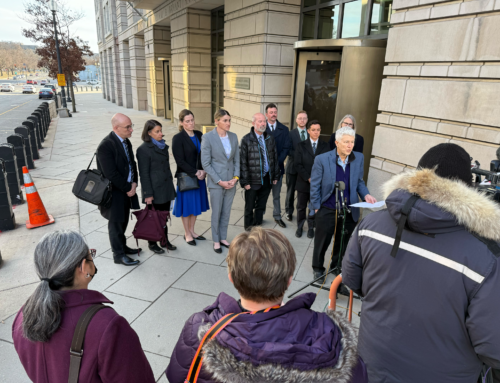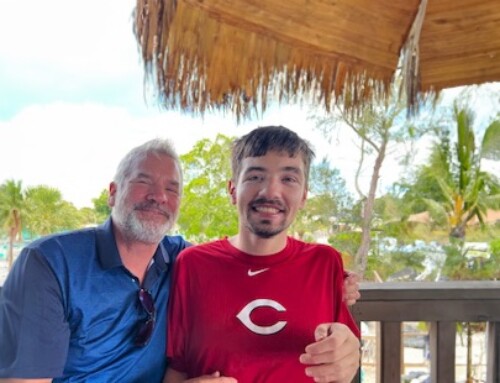CEO of Boston Harbor Now, Kathy Abbott balances the science of climate change with the economics of waterfront development
By Nina Livingstone
Growing up on Cape Cod, Kathy Abbott watched as housing developments consumed the land and pollution crept into the bay. By the age of 14, she’d set her sights on environmental work.
In 2016, she was named president and CEO of Boston Harbor Now (BHN), making development and environmental preservation working companions.
With a staff of 12 and a $4.6 million budget, she is clear about BHN’s priorities: “Accessibility and climate resiliency of our waterfront and islands.
“A combination of unprecedented development of the waterfront and sea level rise created the need for a stronger advocate and implementer on the harbor,” says Abbott of BNH’s creation — the merging of the Boston Harbor Association with the Boston Harbor Island National Park Area.
“There is a limited amount of waterfront and the public has rights to filled land (a significant portion of the waterfront) and to the harbor. It was critical that we take a stronger stand to protect, plan and build for the public’s use and enjoyment of the harbor,” she added.
In the 1980s, Harborwalk was conceived in a “waterfront plan done by the city,” Abbott explains. “Its purpose was to provide public access to the waterfront in Boston. Boston has 47 miles of waterfront and Harborwalk has been built on approximately 40 miles of it.
Taking action is the ethos of Boston Harbor Now, with Harborwalk leading the way.
“Today, in the face of climate change and sea level rise, it is critical that Harborwalk become as much about protecting us from the rising tide and storm surge as it is about access,” she explains. “We can’t responsibly provide access without resiliency.”
But numerous challenges remain: how to build up and build out and create the waterfront described in Resilient Boston Harbor, the city’s plan to protect Boston neighborhoods and enhance the waterfront. How do we finance it publicly and privately? What are the changes we need to make to regulations to enable this work? How do we organize ourselves to get it done and how do we prioritize the efforts required?
These are the questions that dominate Abbott’s day, which usually stretches late into the night with mandatory social events dotting her jammed calendar. There is no “typical day” on her schedule, she says. From board meetings to fundraisers to strategic planning sessions to dinner meetings, Abbott is constantly on the move.
So how does she cope with the stress? “I usually ride my bike, weather depending, from my home to Boston — four miles each way … that’s 40 miles a week,” she says matter-of-factly, adding that she occasionally walks the route.
Yoga and meditation are where she finds her moments of calm. Being creative in the arts — learning how to play the ukulele, painting, cooking, reading — provide another outlet. “And spending time with people I love,” she says, topping off her list.
A striking woman, 5-foot-5 Abbott describes herself as athletic, which does come in handy. Even in her usual combination of dress and scarf, she moves quickly. To make a meeting on time, you may find Abbott running from building to building, or if time is really tight, taking the classic shortcut across streets, down sidewalks, through parking lots and clearing the occasional guardrail. The latter is not a story she often shares, perhaps because it came with a split seam and a dash to the door, slipping into her meeting right on time.
Although Abbott, who is an openly gay woman, says that although she doesn’t see herself in a male-dominated field, she won’t discount the fact that men do outnumber women in leadership positions. “I am heartened by the number of women now stepping up to lead politically [both] locally and nationally,” she says, as well as the progress lesbians have made in all arenas.
Being named among Boston magazine’s “100 Most Influential People in Boston” may be a title she proudly carries, yet it isn’t what keeps her motivated. Perhaps instead it’s the photographs she shares of storm surges taking over playgrounds, covering park benches and filling nearby Boston streets, offering us a glimpse into the future.
“Boston Harbor Now sits at a critical juncture between the private and public sector on waterfront development and port issues; and with the private, city, state and federal governments on park issues,” Abbott says. “It is about understanding and respecting the different needs and perspectives and always negotiating for the best possible outcome for the greatest number of people.
“Ten years from now we hope that we can be proud of our harbor and that everybody — every child growing up — has an opportunity to own it.
“Public and private parks and open spaces, these are the backbone of a more accessible, engaging and resilient waterfront that protects and greatly enhances the lives of our people and our economy,” Abbott says.
Last summer, Boston Harbor Now created and launched the Harborwalk Web Tool, which enables the public to easily find out where they can go and what they can do on the waterfront; the public access program to the islands grew from 19,000 to 35,000 youth and families.
“But like any other nonprofit the single biggest challenge isn’t the work, it’s finding ways to raise the funds and generate income to support the work,” Abbott says.
“How would I describe the harbor? The city is almost half land and half water. The harbor is open space with 34 islands with hundreds of miles of shoreline, beautiful views in every direction, including a city where there are millions of things to do,” she says Harborwalk 2.0 is the next step. UMASS Boston studied the potential for building a barrier across Boston Harbor from Winthrop to Hull and determined that it would take 30 years and cost approximately $18 billion, says Abbott.
“As we learned last winter, and in watching weather impacts on other cities around the country, we need to be addressing the issues of the changing climate now. The barrier will continue to be looked as we work hard in the next 12 years to mitigate carbon and make Boston carbon free by 2050.”
Abbott credits Boston Mayor Marty Walsh, the Green Ribbon Commission, and Gov. Charlie Baker for putting Boston in the national spotlight in its efforts to address climate change through adaptation and mitigation.
“Now it is up to the rest of us to accept responsibility and act,” she says.
This article originally appeared in Boston Spirit Magazine, which can be found at: Club Café , 209 Columbus Ave., South End Boston; and Cathedral Station, 1222 Washington St., Boston.
If you are interested in becoming a supporter of Boston Harbor Now, you can contact jgarvey@bostonharbornow.org or call 617-223-8667. For more information, visit the website, https://www.bostonharbornow.org/.
Nina Livingstone is a Boston-based writer who has been published in Edible Boston, Boston Spirit magazine, the Harvard University Gazette, and Portland Monthly magazine, among others. You may contact her at nina@ninalivingstone.com or visit her website at www.destinationmirth.com


